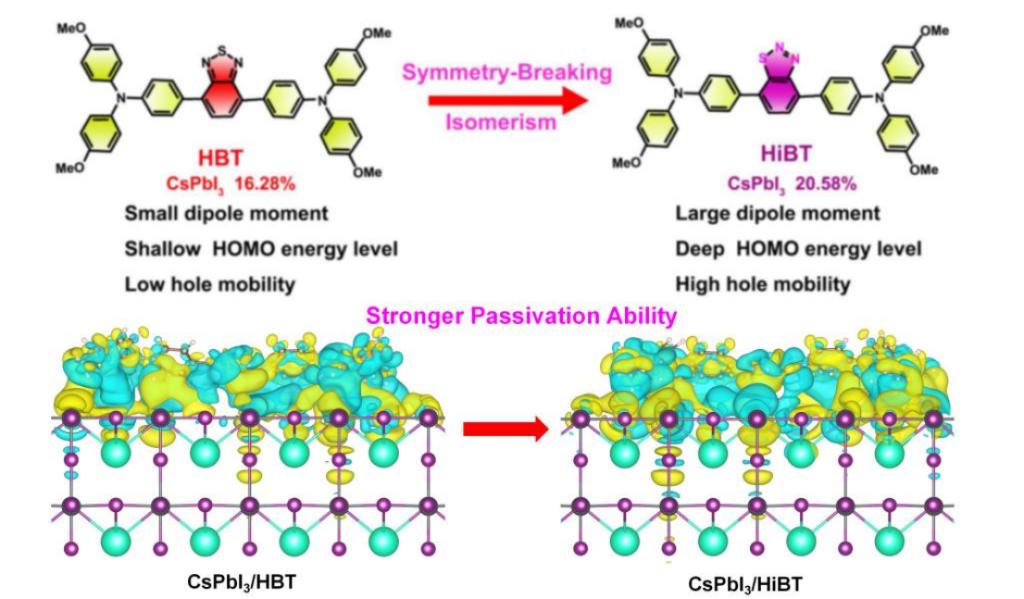Recently, Associate Professor Tao Jia’s team from the School of Optoelectronic Engineering proposed a symmetry-breaking molecular design strategy to construct D–A–D type isomeric small molecules, which were successfully applied as dopant-free hole transport layers in all-inorganic perovskite solar cells. The related research findings have been published in the prestigious journal Angewandte Chemie International Edition (Impact Factor = 16.1), under the title “Symmetry-Breaking Strategy Yields Dopant-Free Small Molecule Hole Transport Materials for Inorganic Perovskite Solar Cells with 20.58% Efficiency and Outstanding Stability.” This paper features Huimin Cai, a 2023 undergraduate student, as the first author; Associate Professor Jia Tao as the corresponding author; and Guangdong Polytechnic Normal University as the primary affiliation.
The study focuses on the molecular design of novel dopant-free small-molecule hole transport layer (HTL) materials and their application in perovskite solar cells. By introducing molecular symmetry breaking, the dipole moments, energy level alignment, and defect passivation capability of the materials can be effectively tuned, thereby significantly improving key performance metrics and the long-term operational stability of the photovoltaic devices. As a result, a highly stable device delivering a power conversion efficiency (PCE) of up to 20.58% was achieved—one of the highest values reported for dopant-free HTLs in inorganic perovskite solar cells. This work represents an important step forward in the development of efficient and stable inorganic perovskite photovoltaic technologies.

The publication of this paper reflects the notable success of the School of Optoelectronic Engineering’s “research-oriented education” model and showcases the pioneering scientific spirit of its undergraduate students. The school’s leadership team is committed to further strengthening the integration of scientific research and education by advancing research platforms, fostering international collaboration, and enhancing practical innovation training. These comprehensive efforts aim to inspire more undergraduate students to actively explore the frontiers of science and technology, while systematically improving their scientific literacy and innovative capacity—ultimately nurturing a new generation of high-level, research-driven undergraduate talents.